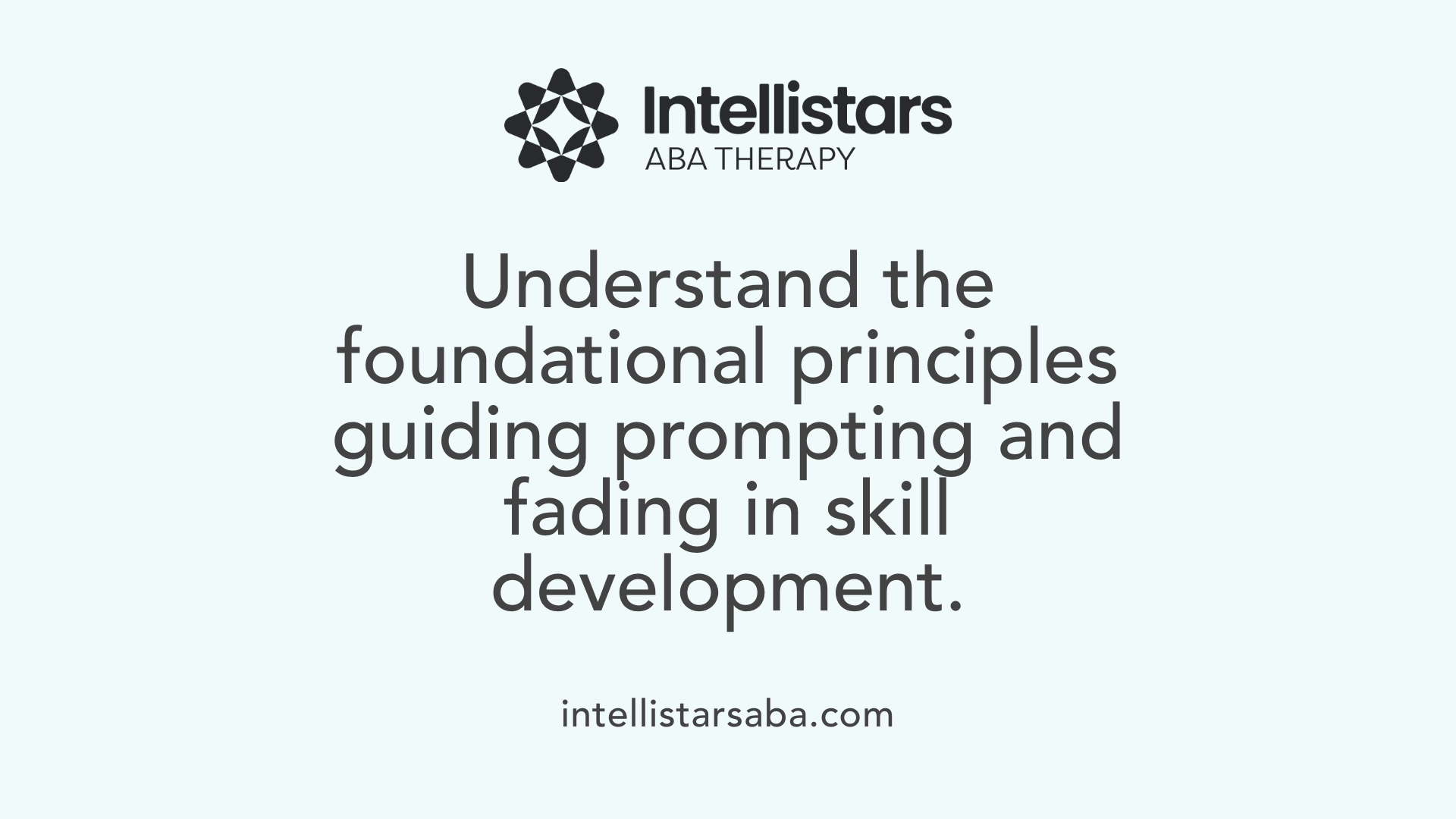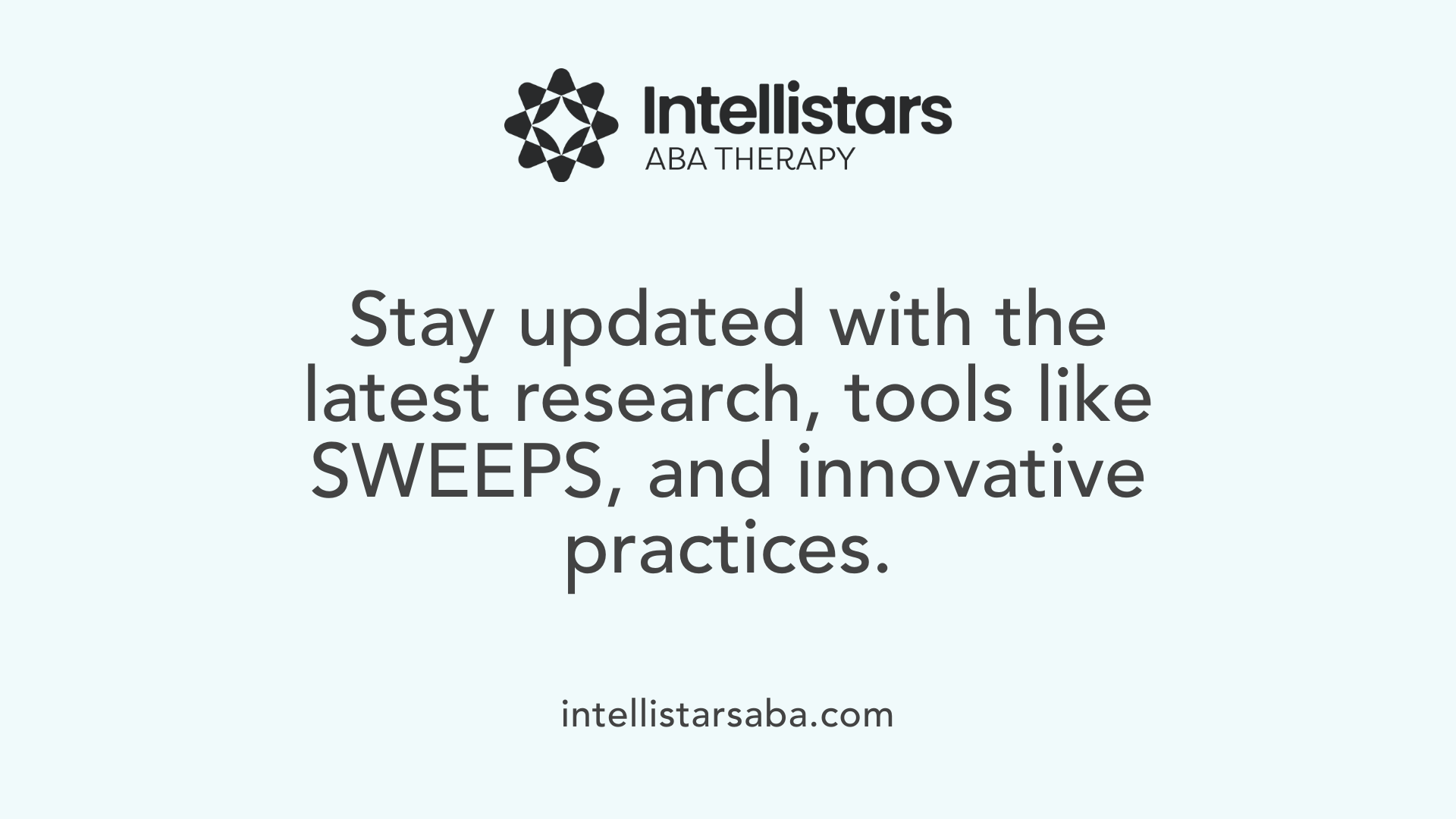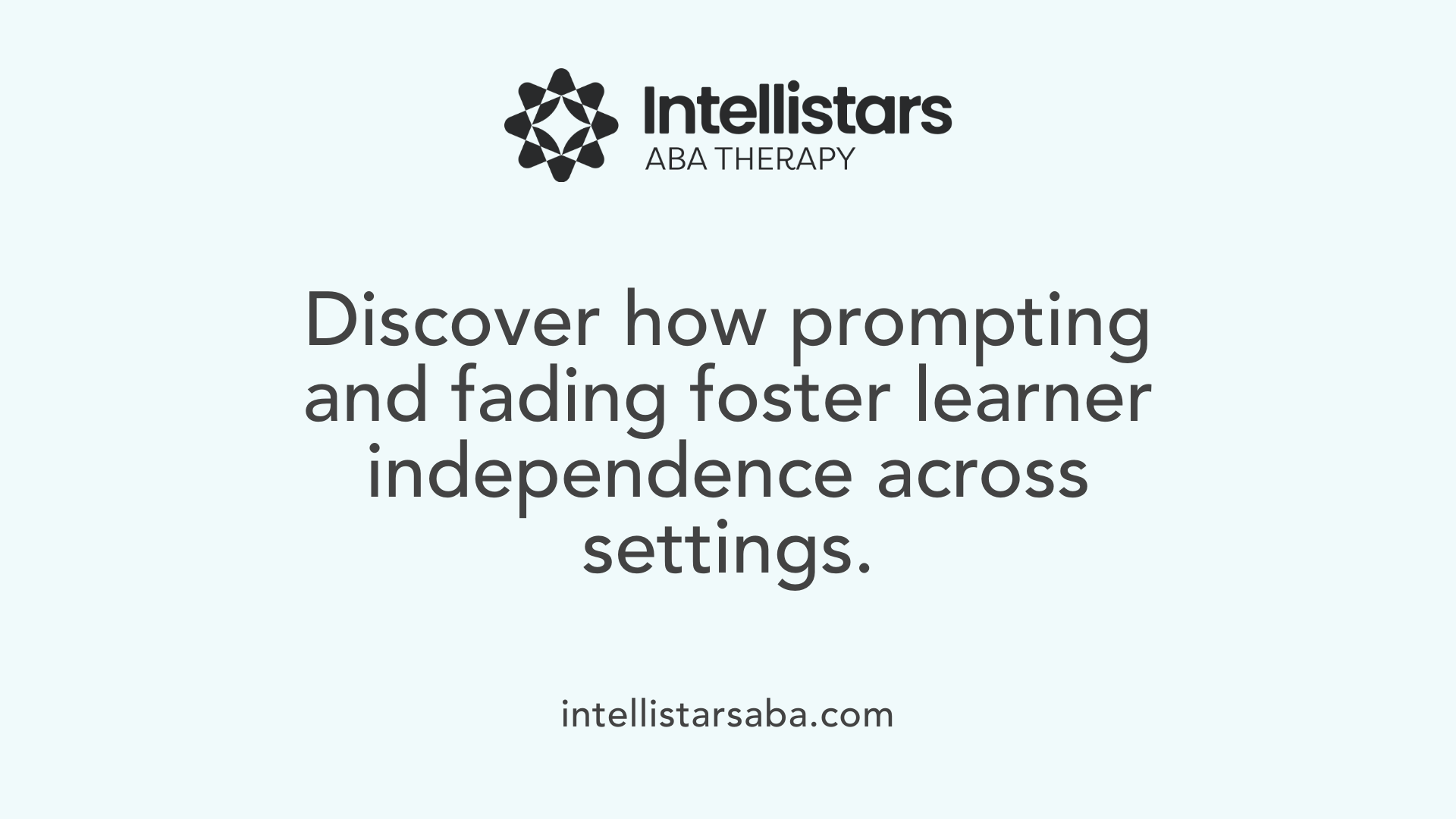Understanding the Fundamentals of Prompting and Fading
Prompting and fading are core strategies in behavior analysis, particularly in the development of skills for individuals with developmental disabilities such as autism spectrum disorder (ASD). These techniques are instrumental in guiding learners toward independent performance by providing necessary support initially and systematically reducing it over time. This article explores their roles in skill development, effective application methods, and research-based insights to maximize learning outcomes.
Core Concepts and Principles of Prompting and Fading

What are the main principles of prompting and fading in skill development?
Prompting in Applied Behavior Analysis (ABA) involves providing cues or assistance—such as verbal, gestural, modeling, or physical prompts—to encourage correct responses to a desired behavior. These prompts act as support mechanisms, guiding learners toward successful performance. They are particularly essential when learners are initially unable to perform a skill independently or need additional guidance to succeed.
Fading, on the other hand, is the process of gradually reducing these prompts over time. The purpose of fading is to foster independent performance and reduce reliance on external cues. Effective fading strategies involve systematic and planned decrease of prompt intensity, ensuring learners can perform the skill with minimal or no prompts, promoting generalization and long-term independence.
The main principles that guide prompt and fading practices include:
- Using the least intrusive prompt necessary to encourage correct responses.
- Combining prompting with reinforcement to increase learning efficiency.
- Implementing fade procedures gradually and systematically to prevent prompt dependency.
Prompting is applied selectively, often after the initial failure to respond correctly or within a specific time delay. Fading ensures that with repeated successes, prompts are phased out smoothly, helping learners to develop confidence and self-sufficiency.
Together, prompting and fading form the backbone of effective skill development in children with autism spectrum disorder and other developmental disabilities. Their integration enables learners to acquire new skills confidently while gradually becoming independent in diverse environments.
Techniques and Procedures in Prompt-Fading Strategies

How do most-to-least and least-to-most prompting strategies compare in promoting skill acquisition?
Most-to-least (MTL) prompting begins with the most intrusive prompts, such as physical guidance or full modeling, and then systematically reduces assistance as the learner gains competence. This approach tends to lead to fewer errors and faster mastery, as the learner receives ample support initially and gradually transitions to independence.
In contrast, least-to-most (LTM) prompting starts with minimal support, such as a simple verbal cue or gesture. If the learner struggles, additional prompts are added incrementally, moving from least to most intrusive only as necessary. While LTM can sometimes promote faster initial responses, it can also result in more errors if prompts are insufficient or if the learner is overwhelmed.
Research by Libby et al. (2008) shows that MTL generally results in more accurate responses with fewer mistakes, making it often more efficient for teaching children with autism spectrum disorders (ASDs). However, some learners may benefit from LTM approaches, especially when learners have some familiarity with the task.
A modified technique, prompt delay or graduated guidance (a combination known as prompt delay), incorporates delays into the hierarchy. This strategy encourages independent responding by gradually increasing the time before prompts, blending the benefits of both MTL and LTM. The choice of procedure should consider the individual learner’s needs, the complexity of the skill, and the goal of minimizing errors.
| Prompting Strategy | Description | Typical Outcome | Best Use Cases |
|---|---|---|---|
| Most-to-least (MTL) | Starts with full prompts and reduces support systematically | Fewer errors, faster mastery | When accuracy is crucial and errors are costly |
| Least-to-most (LTM) | Starts with minimal prompts increasing only if needed | Quicker initiation, potential errors | For promoting independence in familiar tasks |
| Prompt delay (Graduated guidance) | Adds systematic delays; combines MTL and LTM advantages | Balanced mastery and independence | When reducing prompts gradually is desired |
When should least-to-most prompting be used?
Least-to-most prompting is especially valuable when the goal is to foster independence in children or learners who already have some familiarity with the task. The method begins with the least intrusive prompts, such as a verbal cue or gesture, and introduces more intrusive prompts like modeling or physical assistance only if the learner responds incorrectly or not at all.
This approach allows learners to attempt the task on their own, building confidence and problem-solving skills. It is suitable in situations where error correction is important but where initial assistance is minimal to avoid prompt dependency.
Least-to-most prompting is also effective in teaching complex or multi-step tasks. It ensures that learners are minimally supported while still providing enough guidance to prevent frustration or error reinforcement.
In practice, the strategy involves careful planning to fade prompts systematically and systematically increase or decrease assistance, aligning with the learner’s progress. This method is especially favored in programs aiming to promote independence and generalization across settings.
Supporting prompt fading at home involves consistent application, patience, and collaboration with therapists to tailor the hierarchy to the child's unique progress and needs. This ongoing adjustment helps ensure successful skill acquisition and transfer of learning to everyday situations.
Application Strategies and Best Practices for Effective Implementation

How should assessment of learner’s skills and prompt types be conducted?
Effective prompting and fading begin with a comprehensive assessment of the learner's current skill level and specific needs. This assessment includes identifying which prompt types—verbal, gestural, physical, visual, or modeling—are most effective in evoking correct responses for each individual.
Research highlights the importance of prompt topography assessment, which helps distinguish which prompts reliably evoke correct responses. This information aids in designing personalized prompt hierarchies that progress from most to least intrusive, optimizing learning efficiency.
In practice, this might involve using structured observations or functional assessments to determine the least intrusive effective prompts, thus maximizing opportunities for independent responding.
How can prompt hierarchies be developed?
Developing a prompt hierarchy involves organizing prompts from most to least intrusive, based on what is most effective for the learner. The hierarchy usually starts with prompts like physical guidance or modeling and gradually progresses to less intrusive cues such as gestures, verbal prompts, and natural cues.
Research by Libby et al. (2008) indicates that using a clear prompt hierarchy enhances skill acquisition by systematically fading prompts.
Creating this hierarchy requires careful planning, often supported by prompt topography assessment, to ensure that each level of prompt provides optimal support without creating dependency.
What are systematic fading procedures?
Systematic fading involves gradually reducing prompts to promote independence. Common procedures include the most-to-least (MTL) and least-to-most (LTM) techniques.
- Most-to-least (MTL): begins with the most intrusive prompt and gradually decreases assistance as the learner's accuracy improves.
- Least-to-most (LTM): starts with minimal prompts, increasing prompt level only if necessary.
Research shows that MTL prompts often lead to faster mastery and fewer errors, especially in young learners like preschool children. Consistent, gradual adjustment of prompts helps prevent prompt dependency and supports skill generalization.
How can behavioral principles and individualization enhance prompting and fading?
Incorporating behavioral principles such as reinforcement, blocking, and overshadowing can facilitate stimulus control transfer from prompts to natural stimuli.
Individualized assessments similar to functional analysis help tailor prompt-fading strategies, ensuring they match each learner’s unique response patterns. This individualization increases the likelihood of long-term skill retention.
In practice, collaborating with therapists and caregivers to implement consistent routines, observe response patterns, and adjust prompts accordingly fosters better outcomes.
What are practical tips for implementing prompting and fading at home?
Supporting prompting and fading outside clinical settings requires consistent application, patience, and observation. Caregivers should be trained to recognize which prompts work best for their child and how to systematically fade them.
Using a structured prompt hierarchy, maintaining a reinforcement schedule, and tracking progress help in reinforcing independence. Communication and collaboration with therapists can further refine strategies.
How do these strategies promote generalization and independence?
When prompts are carefully chosen and gradually faded, children learn to perform skills independently across different environments and contexts. Consistent application ensures that learned behaviors are durable and transferable, laying the foundation for greater autonomy.
| Technique | Promotes | Best For | Research Support |
|---|---|---|---|
| Most-to-Least (MTL) | Faster mastery, fewer errors | Young children, preschoolers | Libby et al., 2008 |
| Least-to-Most (LTM) | Gradual support, transfer to natural stimuli | Various learners | General effectiveness varies |
| Prompt Delay | Time-based fading | All ages | Empirical support |
| Graduated Guidance | Successful transfer | Skill-specific | Clinical guidelines |
In summary, combining careful assessment, personalized prompt hierarchies, systematic fading, and behavioral principles creates a robust framework for teaching new skills in ABA. Consistency, patience, and caregiver involvement further strengthen these processes, ultimately supporting children with ASD to achieve greater independence.
Research, Tools, and Innovations in Prompting and Fading

What are the main principles of prompting and fading in skill development?
Prompting in Applied Behavior Analysis (ABA) involves providing cues or assistance—such as verbal instructions, physical guidance, gestures, or visual aids—to encourage correct responses from learners. These prompts serve as signals that help bridge the gap between a learner’s current ability and the targeted skill, especially important when a child struggles to respond correctly or promptly.
Fading is an integral process that involves gradually reducing these prompts over time, to foster independent performance. The goal is to remove external supports, enabling learners to perform skills reliably without assistance, thus promoting autonomy.
The underlying principles of prompting and fading emphasize using the least intrusive prompt necessary for success, in order to avoid prompt dependency. Prompting is paired with reinforcement to strengthen correct responses. As a learner demonstrates mastery, prompts are systematically faded using structured procedures such as most-to-least and least-to-most prompting.
These combined strategies are foundational for effective skill acquisition, ensuring that learners gain confidence, problem-solving skills, and eventually perform behaviors independently across various settings.
Comparing fading strategies: MTL vs. LTM
Two prominent prompt-fading procedures are most-to-least (MTL) and least-to-most (LTM). MTL begins with the most intrusive prompts—like physical guidance—and gradually reduces to less intrusive stimuli such as verbal or visual cues. Conversely, LTM starts with minimal prompts, increasing prompt intensity only if necessary.
Research indicates both methods can effectively enhance independent responding, but their efficiency varies among individuals. Libby et al. (2008) conducted a systematic study showing that MTL often leads to faster mastery with fewer errors, especially in children with ASD. Typically, MTL prompted quicker skill acquisition and reduced error rates, which makes it an efficient choice when rapid mastery is desired.
Use of tools like SWEEPS to facilitate prompt linking decisions
To assist behavior analysts in selecting appropriate prompting strategies, innovative tools such as SWEEPS (Structured Workbooks for Effective Prompt Selection) have been developed. This decision-making aid synthesizes research findings, clinical guidelines, and expert input into practical resources like worksheets, flowcharts, and instructions.
The development process involved extensive literature review, expert review panels, and pilot testing with graduate students to ensure usability and effectiveness.
SWEEPS has been tested through controlled evaluations, where students applied the tool with simulated and real clients. Results showed high procedural integrity and ease of use, indicating that it can reliably guide practitioners in choosing the most effective prompting and fading strategies.
Empirical support and ongoing innovations
Research consistently supports the use of systematic prompting and fading procedures. For example, studies demonstrate that prompt hierarchies—from physical to visual cues—are adaptable to different learners’ needs.
Innovations in this field include decision-making frameworks and practical assessment tools. These advancements aim to make skill programming more accessible, especially in settings where comprehensive assessments are difficult to implement.
Implementing prompting and fading with fidelity enhances skill development, promotes independence, and reduces prompt dependency. When used consistently across environments and in collaboration with therapists and caregivers, these techniques significantly improve educational outcomes for children with ASD.
| Technique | Description | Effectiveness Evidence | Suitable for |
|---|---|---|---|
| Most-to-Least (MTL) | Starts with physical prompts, reduces gradually to natural cues | Faster mastery in research, fewer errors (Libby et al., 2008) | Young children, rapid mastery |
| Least-to-Most (LTM) | Begins with minimal cues, increases if needed | Effective, though may be slower for some learners | Learners with higher initial skill levels |
| Prompt Hierarchies | Progression from most to least intrusive prompts | Empirically supported across various skills and ages | Tailored to individual needs |
| Prompt Fading Strategies | Systematic reduction of prompts over time | Enhances independence, reduces prompt dependence | All developmental levels |
Understanding and applying these prompting and fading techniques through tools like SWEEPS can vastly improve learning outcomes for children with autism. Continuous research and innovation aim to refine these methods, ensuring they are accessible and effective for diverse learners.
Promoting Independence and Practical Applications

How does prompting and fading contribute to promoting independence in learners?
Prompting involves giving learners cues or assistance—such as verbal hints, gestures, physical guidance, or visual aids—to encourage correct responses during the initial stages of skill acquisition. Fading complements prompting by systematically reducing these prompts over time, with the goal of enabling learners to perform skills independently using natural cues from their environment.
Different prompting strategies, including most-to-least (MTL) and least-to-most (LTM) prompting, play vital roles in this process. MTL starts with the most intrusive prompts, like physical guidance, and gradually moves to less intrusive cues, such as visual or verbal prompts. Conversely, LTM begins with minimal assistance and gradually escalates prompt intensity if the learner struggles.
Research shows that effective prompt fading not only speeds up skill mastery but also minimizes errors and reduces prompt dependency. For example, a systematic assessment of prompt topography helps identify the most effective prompts for evoking correct responses, enhancing the efficiency of the learning process.
By gradually transferring stimulus control from prompts to natural cues, learners build confidence and develop problem-solving skills. As a result, they become more autonomous, performing skills successfully without external support. These techniques are essential in teaching crucial daily routines, communication, self-care, social skills, and emotional regulation, thereby fostering independence in various settings.
Caregiver involvement and training
Caregiver engagement is fundamental to the success of prompting and fading strategies. Consistent application at home and in natural environments requires coaching and collaboration with therapists. Training caregivers ensures they understand how to implement prompts, observe responses, and systematically reduce prompts over time.
A well-informed caregiver can reinforce skills learned during therapy sessions, promoting generalization across different contexts. Supportive coaching also helps caregivers troubleshoot challenges, adapt prompts for individual needs, and maintain patience throughout the process.
Generalization of skills across settings
For learned skills to be meaningful, they must transfer from clinical settings to real-world environments, such as home, school, and community. Effective prompt fading and strategic reinforcement facilitate this generalization.
In natural settings, prompts are gradually replaced with environmental cues or internal motivation, which helps learners apply skills across many contexts. Caregivers and teachers collaborate to simulate real-life situations, maximize opportunities for practice, and reinforce independence.
Future directions in promoting autonomous learners
Ongoing research continues to refine prompting and fading techniques and develop tools like decision-making frameworks to aid clinicians. Innovations include visual decision trees, such as SWEEPS, which assist in selecting the most appropriate prompting strategies based on individual needs.
Further studies are needed to evaluate how these approaches influence long-term outcomes in independence and functional skills. Incorporating technology, parent training, and individualized assessments promises to enhance the effectiveness and accessibility of interventions aimed at fostering efficient, autonomous learners.
Maximizing Skill Acquisition and Independence
Prompting and fading are fundamental techniques that underpin successful skill development, especially for individuals with autism spectrum disorder. When strategically applied, these methods not only facilitate the initial acquisition of skills but also promote lasting independence by transferring stimulus control to natural cues. Effective assessment, individualized prompt hierarchies, and systematic fading procedures—guided by research and clinical best practices—are essential components in fostering autonomous, confident learners. Continued innovation, such as decision-making tools like SWEEPS, enhances practitioners’ ability to implement these strategies effectively, ultimately improving outcomes for learners across diverse settings.
References
- A Comparison of the Effects of Two Prompt-Fading Strategies on ...
- Understanding Prompting and Fading in ABA Therapy: A Guide for ...
- Prompts and Prompt Fading for Building Independence - T-TAC ODU
- A Decision-Making Tool for Evaluating and Selecting Prompting ...
- Implementing Prompt and Prompt Fading Procedures in ABA Therapy
- The Roles of Prompting and Fading in ABA Therapy
- A Comparison of the Effects of Two Prompt-Fading Strategies on ...
- Understanding Prompting and Fading in ABA Therapy: A Guide for ...
- Prompts and Prompt Fading for Building Independence - T-TAC ODU






